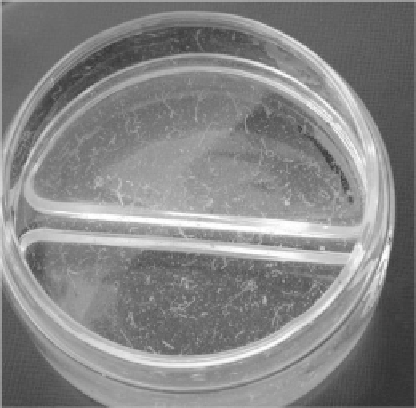Agriculture Reference
In-Depth Information
7.2.6.2 PREVENT BACK-SIPHONING
Back-siphoning is the backflow of water from the soil profile back into the tape at the
end of an irrigation cycle caused by a vacuum developed as residual water in the tape
moved to the lower elevations in the field. Back-siphoning may pull soil particles and
other debris through emitters into the tape. Figure 5 shows some live worms that were
flushed from SDI lines during normal maintenance. It is hypothesized that the eggs or
cocoons of worms were pulled into the drip-lines at the higher elevations in the field
when zone valves were closed. Once in the drip-lines, the eggs may have hatched and
the worms started to grow. Worms and other contaminants were removed during nor-
mal flushing cycles (every 2 weeks).
FIGURE 5
Worms flushed from an SDI system. Flushing twice a week solved the problem.
7.3 SUMMARY
Drip irrigation, micro irrigation and subsurface drip irrigation (SDI) systems can deliv-
er water at low flow rates very uniformly. A permanent system, properly designed and
maintained, should last more than 20 years. A maintenance program includes cleaning
the filters, flushing the lines, adding chlorine, and injecting acids. These preventive
measures will reduce the need for major repairs and extend the life of the system.
This chapter describes and provides ideas on how to conduct preventive maintenance,
evaluate a drip irrigation system, inject chlorine and sulfuric acid, and provides some
other considerations for maintaining these irrigation systems.
















Search WWH ::

Custom Search